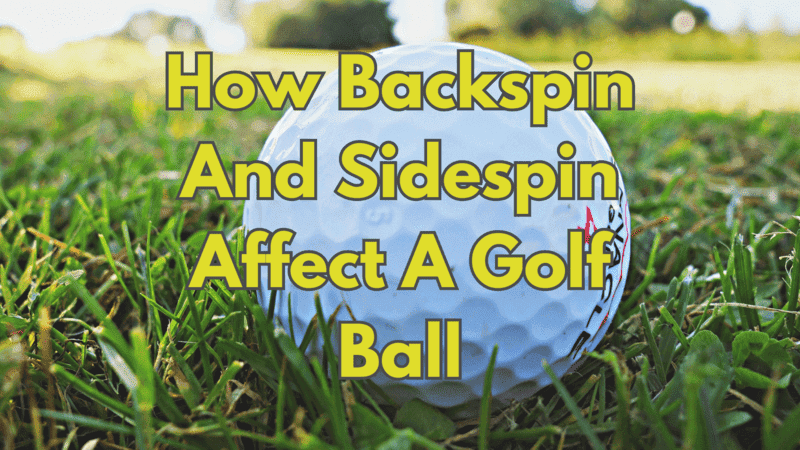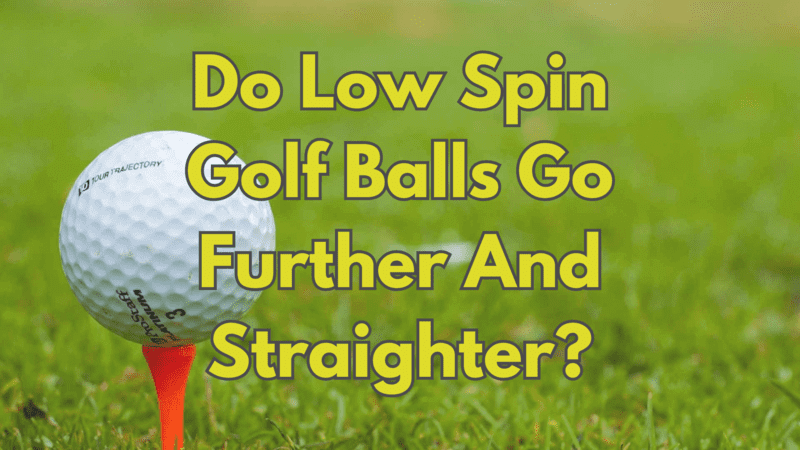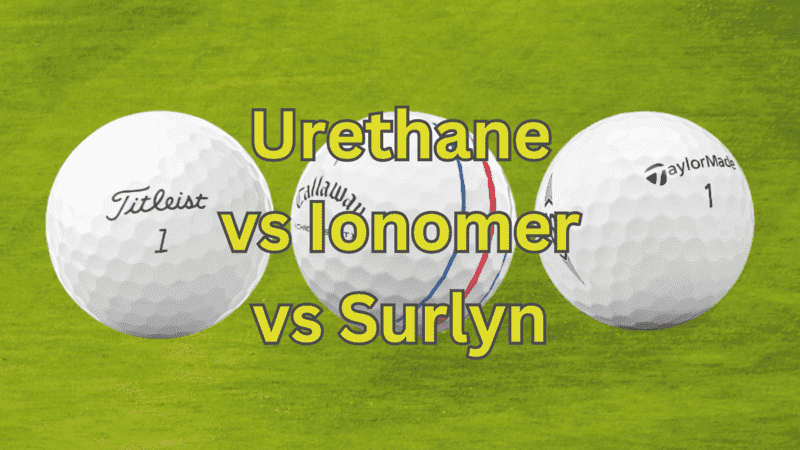Greetings, golf aficionados! Are you ready to embark on a journey through the mystical realms of backspin and sidespin? Picture this: your trusty golf ball taking on a life of its own, pirouetting through the air like a prima ballerina, leaving a trail of wonder and excitement. Today, we’re delving into the enigmatic world of spin – that magical force that can turn an ordinary shot into a stroke of genius.
Grab your clubs, dust off your imagination, and join us as we unravel the secrets of how backspin and sidespin transform a simple swing into a mesmerizing spectacle on the greens. Whether you’re a golf guru or a fairway novice, get ready to be enchanted by the physics, the finesse, and the downright wizardry that happens when a golf ball decides to put on its spinning shoes.
So, tee up, swing with a sprinkle of curiosity, and let’s uncover the spellbinding tales of how backspin and sidespin can make your golf ball dance, twirl, and maybe even break into a little moonwalk on the green. Are you ready to witness the magic unfold? Let the spin adventure begin!
Factors That Influence the Flight of a Golf Ball
When it comes to the flight of a golf ball, there are several key factors that come into play. One of the most important factors is the speed at which the ball is struck. The speed of the clubhead determines the initial velocity of the ball and has a direct impact on its trajectory and distance.
Another key factor is the angle of attack, which refers to the angle at which the clubhead strikes the ball. The angle of attack can influence both the launch angle and the amount of spin on the ball, ultimately affecting its flight path.
Additionally, the loft of the clubface and the type and quality of the golf ball itself are also factors that can influence the flight of the ball. The loft of the clubface can determine the initial launch angle and spin, while the type and quality of the ball can affect its overall performance and responsiveness in the air.
By considering these factors and understanding how they interact, golfers can gain greater control over their shots and optimize results on the course.
The Relationship Between Spin and Ball Trajectory
Spin and ball trajectory are intricately linked in the game of golf. The spin on a golf ball plays a significant role in determining its flight path. When a golf ball rotates while in the air, it experiences different aerodynamic forces, which ultimately shape its trajectory.
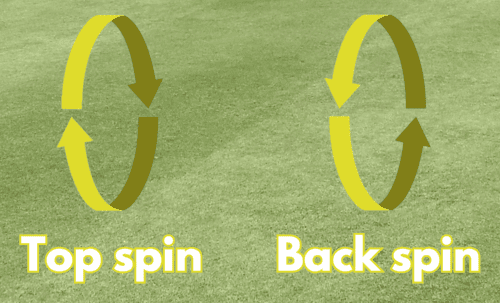
Backspin, for instance, is a type of spin that is imparted on the ball when struck with the clubface in a way that gives it a spinning motion from top to bottom. This backspin creates lift, helping the ball to stay in the air for longer and achieve a higher trajectory.
On the other hand, sidespin refers to the horizontal spin that can cause the ball to curve to the left or right. Understanding the relationship between spin and ball trajectory is essential for golfers looking to control their shots and accurately navigate the course.
Understanding the Mechanics of Backspin on a Golf Ball
Backspin is an essential factor that influences the flight of a golf ball. When a golf club strikes the ball with a descending blow, it imparts topspin or backspin, depending on the club’s angle and the golfer’s swing. In the case of backspin, the ball spins in the opposite direction of its forward motion, creating lift and increasing its potential to stay in the air for a longer duration.
The interaction between the clubface and the ball at impact is crucial in generating backspin. The loft of the club and the contact point on the ball’s surface significantly affect the amount of backspin produced. By understanding the mechanics of backspin, golfers can gain control over their shots and optimize distance and accuracy.
One of the main contributors to backspin is the grooves on the clubface. The grooves serve to channel away the water and debris that may come between the ball and the clubface during a shot. This ensures that the ball and the clubface make clean contact.
Additionally, the grooves create more friction between the clubface and the ball, facilitating greater backspin. The angle of attack, which refers to the club’s angle relative to the ground at impact, also plays a vital role in generating backspin. A steeper angle of attack results in a more significant amount of backspin.
By carefully adjusting the angle of attack and utilizing the grooves on the clubface, golfers can manipulate backspin to their advantage and execute various shots with precision.
Exploring the Effects of Sidespin on Golf Shots
The effects of sidespin on golf shots can be both beneficial and detrimental to a player’s game. When a golf ball possesses sidespin, it curves in the air, deviating from its intended trajectory. This deviation can either work in favor of the golfer by allowing the ball to maneuver around obstacles or provide strategic advantages such as setting up an ideal angle for the next shot.
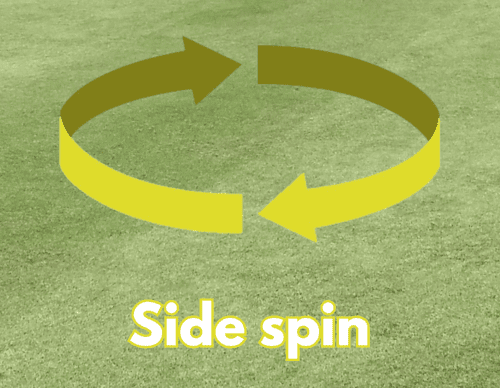
On the other hand, sidespin can also lead to unintended consequences, causing the ball to veer off course and potentially land in unfavorable positions, such as hazards or out-of-bounds areas. Hence, mastering the control of sidespin is crucial for golfers who seek to improve their overall performance on the greens.
One of the primary factors influencing the amount of sidespin generated is the clubface angle at impact. A closed clubface at the moment of contact tends to induce a clockwise spin, resulting in a ball that curves from left to right for right-handed players (and right to left for left-handed players).
Conversely, an open clubface encourages counterclockwise spin, leading to a ball that curves in the opposite direction.
Additionally, the degree of sidespin can also be influenced by the direction and speed of the golfer’s swing, as well as the composition and condition of the golf ball itself. Therefore, understanding the effects of sidespin and how to manipulate it can provide golfers with a valuable tool to enhance their shot-making abilities and ultimately improve their scores on the course.
How Spin Creates Lift and Keeps the Ball in the Air
When a golf ball is struck with backspin, something remarkable happens: it experiences lift. This lift is a result of the aerodynamic forces at play as the ball spins through the air. As the ball rotates backward, the air particles passing over its surface generate a phenomenon known as the Magnus effect.
The Magnus effect refers to the generation of horizontal lift on a rotating object in a fluid medium, such as air. In the case of a golf ball, the backspin causes the air to flow faster over the top surface of the ball, creating lower pressure above it and higher pressure below it. This pressure difference generates an upward force that counters the force of gravity, supporting the ball in the air.
To further understand the role of spin in keeping the ball airborne, it is essential to consider the effects of the Bernoulli principle. According to this principle, as the velocity of a fluid (or air) increases, the pressure exerted by that fluid decreases.
In the case of a spinning golf ball, the lower pressure above the ball created by the backspin results in a lifting force that opposes gravity. This combination of the Magnus effect and the Bernoulli principle allows for a balance of forces that keeps the ball aloft and allows it to travel through the air with a greater distance and hang time.
The Role of Backspin in Increasing Distance and Control
Backspin, a term frequently used in golf, plays a vital role in increasing distance and control of a golf shot. When a golf ball is struck with backspin, it creates a swirling effect on the ball, causing it to rotate backwards as it flies through the air. This backward rotation helps to create lift and keeps the ball in the air for a longer duration. When a ball has backspin, it also experiences less air resistance, allowing it to travel farther in its trajectory.
In addition to the distance factor, backspin also contributes to the control of a golf shot. The backspin on a golf ball creates more stability in flight, reducing the effects of side forces such as wind and curvature of the clubface. This increased stability allows golfers to have better control over the ball’s direction and trajectory, resulting in more accurate shots.
Golfers often utilize backspin for approach shots and greenside play, as it helps them to stop the ball on the green and minimize the rolling after landing. Overall, mastering the art of backspin can significantly enhance a golfer’s ability to increase both distance and control in their game.
How Sidespin Can Cause Hooks and Slices in Golf Shots
When it comes to the flight of a golf ball, sidespin can play a significant role in causing hooks and slices. Sidespin occurs when the golf ball is struck with an angled clubface, causing the ball to rotate in a lateral direction. This rotation creates an aerodynamic imbalance, affecting the ball’s trajectory and ultimately causing it to curve.
A hook is a shot that curves sharply from right to left for a right-handed golfer, while a slice curves from left to right. Both of these shots are typically the result of sidespin generated during the swing. The amount of sidespin can vary based on factors such as the golfer’s swing path, clubface angle, and the impact point on the ball. Therefore, even a minor deviation in these factors can result in a significant amount of sidespin and consequently a severe hook or slice.
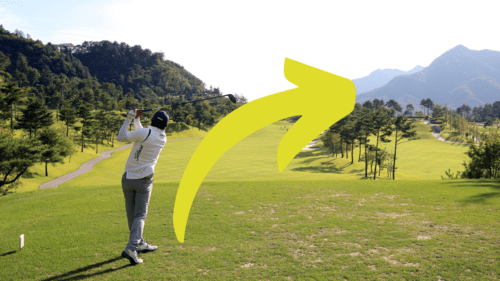
The Impact of Backspin on Approach Shots and Greenside Play
When it comes to approach shots and greenside play in golf, the impact of backspin cannot be overstated. Backspin refers to the rotational force applied to the golf ball upon impact and plays a crucial role in determining how the ball behaves upon landing.
By creating backspin, the ball is able to generate lift, allowing it to stay in the air for longer periods and have a softer landing. This is particularly valuable when hitting approach shots to the green, as it ensures better control and reduces the chances of rolling off the surface.
Moreover, backspin plays a vital role in greenside play, facilitating precise and delicate shots such as pitch shots and chip shots. With the right amount of backspin, a golfer can effortlessly stop the ball on the green, allowing for more accurate putting and ultimately improving their overall score.
To achieve the desired backspin on approach shots and greenside play, golfers must consider various factors. First and foremost, the quality of contact between the clubface and the ball is crucial. A clean strike with the center of the clubface maximizes the transfer of energy and spin, resulting in optimal backspin.
Additionally, club selection and the type of ball can also impact backspin. Certain club designs and higher-end golf balls are specifically engineered to generate more spin.
Furthermore, understanding the specific conditions of the course, such as the firmness of the greens and the slope of the landing area, can aid in adjusting the technique and achieving the desired amount of backspin.
By mastering the art of backspin on approach shots and greenside play, golfers can enhance their short game skills and gain a competitive edge on the course.
Strategies for Utilizing Backspin and Sidespin to Your Advantage
One key strategy for utilizing backspin and sidespin to your advantage in golf is to assess the conditions on the course and make thoughtful shot selections. By understanding the influence of wind, slope, and the type of lie you have, you can determine which type of spin will be most beneficial for your shot.
For example, if you are hitting into a crosswind, utilizing sidespin can help counteract the wind and keep your ball on a straighter trajectory. On the other hand, when faced with an uphill lie, generating backspin can provide more lift and allow the ball to carry further.
Another effective strategy is to experiment with different clubs and techniques to achieve the desired spin. Each club in your bag has different loft angles and face designs, which can greatly affect the amount of spin produced. By practicing with different clubs, you can develop a better understanding of which ones are more suited for generating backspin or sidespin.
Additionally, experimenting with your grip and swing techniques can also provide you with more control over the spin. For instance, adjusting your grip to promote an open or closed clubface at impact can help you generate more sidespin, while focusing on a clean and downward strike can enhance backspin.
Mastering the Art of Spin: Tips and Techniques for Golfers
Golfers looking to improve their game often strive to master the art of spin. Whether it’s backspin or sidespin, understanding the dynamics of spin can make a significant difference in both distance and control. To optimize spin, golfers can employ several tips and techniques.
Firstly, it is essential to choose the right club for the desired spin. For backspin shots, a lofted club, such as a wedge, is ideal. The increased loft will create more friction between the clubface and the ball, leading to greater backspin.
Conversely, to generate sidespin, golfers should consider using a driver or a long iron. By hitting the ball with an open or closed clubface, they can manipulate the side spin and shape the ball’s flight path.
Additionally, proper body alignment and foot positioning play crucial roles in achieving the desired spin. Golfers should aim to align their body parallel to their intended target line, which helps promote a square clubface at impact. Correct foot positioning can also aid in controlling the desired spin by enabling the golfer to swing along the proper swing plane.
By applying these tips and techniques, golfers can begin to master the art of spin, enhancing their game and taking their shots to new heights.
FAQs
What factors influence the flight of a golf ball?
Factors such as clubface angle, clubhead speed, wind conditions, and the type of golf ball used can all influence the flight of a golf ball.
How does spin affect the trajectory of a golf ball?
Spin plays a crucial role in determining the trajectory of a golf ball. Backspin creates lift, allowing the ball to stay in the air longer, while sidespin can cause the ball to curve to the left or right.
What are the mechanics of backspin on a golf ball?
Backspin is created when the grooves on the clubface grip the ball and impart a spinning motion. This spin generates lift, allowing the ball to achieve a higher and longer flight.
How does sidespin affect golf shots?
Sidespin can cause a golf ball to curve in the air. If the ball has a sidespin to the right, it will result in a slice, while a sidespin to the left will cause a hook.
How does spin create lift and keep the ball in the air?
Spin creates lift by creating an area of lower pressure above the ball, helping it stay in the air for a longer duration. The backspin also helps stabilize the ball’s trajectory.
What role does backspin play in increasing distance and control?
Backspin allows the ball to travel farther by reducing air resistance and optimizing lift. It also provides better control as it helps to stabilize the ball’s flight and landing.
Can sidespin cause hooks and slices in golf shots?
Yes, sidespin is a key factor in causing hooks and slices in golf shots. The direction and degree of sidespin can result in a ball curving to the left (hook) or right (slice).
How does backspin impact approach shots and greenside play?
Backspin is essential for approach shots and greenside play as it allows the golfer to control the ball’s stopping power and spin upon landing, making it easier to hold the green.
Are there strategies for utilizing backspin and sidespin to your advantage?
Yes, golfers can utilize backspin and sidespin to their advantage by adjusting their clubface angle, using different shot techniques, and understanding the effects of spin on ball flight. Practice and experimentation are key to mastering these techniques.
What are some tips and techniques for golfers to master the art of spin?
Some tips include practicing proper grip and hand position, adjusting clubface angle, experimenting with different ball positions, and seeking guidance from experienced golf instructors.
